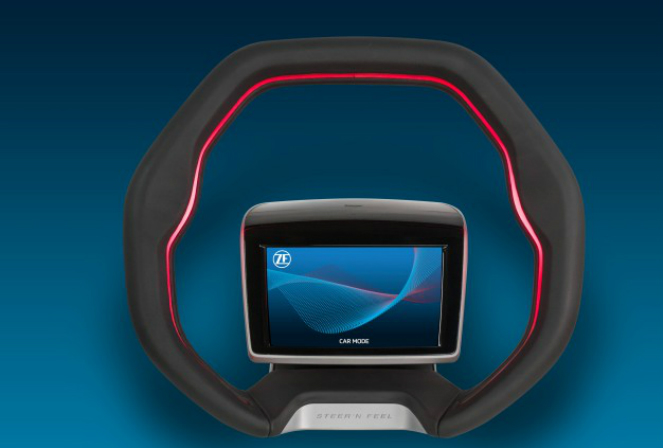
At first glance, the concept of putting a touchscreen on a steering wheel might seem strange, if not crazy — but it isn’t meant for current cars. Rather, ZF hopes that it will make self-driving cars easier to control. For the foreseeable future, even the most advanced self-driving cars will need a way for human drivers to take control, so we aren’t getting rid of steering wheels anytime soon. However, those cars will also need a way for users to input directions, set destinations, and other tasks. A touchscreen is a natural fit for that sort of thing, given that we already use them on devices every day.
The embedded touchscreen does present its own unique challenges, however. One of the most pressing is the fact that in modern cars, the airbags are stored inside the steering wheel. As a potential workaround, ZF found a way to store the airbag in the rear-rim of the steering wheel. In the event of an accident, the airbag will wrap around the wheel, protecting the driver’s face from the touchscreen.
Juergen Krebs, VP of engineering for ZF, believes that the company’s touchscreen steering wheel may very well be the future of how we interact with our cars.
“ZF’s advanced steering wheel concept represents an important step in the evolution of automated driving while helping to enhance safety and driver awareness,” Krebs said in a statement. “As we prepare for Level 3 automated functions, the hand-over of control between vehicle and driver using highly accurate feedback will be critical. We believe our new concept is the most intuitive and provides the clearest feedback to the driver.”
Those hoping to get a better look at ZF’s futuristic steering wheel can see it for themselves next month at the company’s CES booth in Las Vegas.
Editors' Recommendations
- Elon Musk eyes 2024 for Tesla robotaxi sans steering wheel, pedals
- This tech was science fiction 20 years ago. Now it’s reality
- Waymo’s autonomous cars steer clear of any potential election unrest
- GM requests green light to ditch steering wheel in its self-driving cars
- Waymo asks the government to stop requiring steering wheels for autonomous cars


